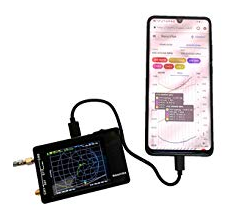ClearStream Eclipse Sure Grip HDTV Antenna
35 Mile Range
The ClearStream Eclipse Sure Grip TV Antenna with new advanced performance to receive a greater range of frequencies 35 miles from the broadcast towers. Grips to any smooth surface, such as a wall or window. Great for dorm rooms, RV's and over-the-road vehicles. It features a black or white double-sided design and is paintable, so you can match your wall, furniture, or accent color for a custom fit.
Setup is Easy
Antennas Direct ClearStream Eclipse TV Antenna, 35+ Miles/55+ KM Range, Multi-Directional, Grips to Walls/Windows with Sure Grip Strip, 12 ft. RG-6 Cable,...
Clearstream ECLIPSE Amplified TV Antenna, 50+ Mile Range, Multi-Directional, Grips to Walls, 20dB In-Line Signal Amplifier, 15 ft. Coaxial Cable, 5 ft. USB...
Pros :
Cons :
Pros :
- Suitable for Down Town House
- Indoor Antenna
- Suitable for Apartment
Cons :
- Need Line Of Sight Glass Wall/Door
Pros :
Cons :
- Long range Antenna
- Multifunction Antenna VHF/UHF
- Indoor / Outdoor Antenna
Cons :
- Better use 70 miles Eclipse antenna Outdoor for maximize reception
- Need Tools for Outdoor Installation
Pros :
- Long Range Antenna Receiver
- Indoor / Outdoor Function
Cons :
- Big in Size Antenna
- Need Tools for Outdoor Installation
Reduce Your Monthly TV Bill
You can now experience HDTV in the highest quality picture and sound available. Over-the-air broadcasts are transmitted in crystal clear Full HD 1080; far less compressed than what cable and satellite offer. Many local broadcasts are digitally aired in 5.1 Surround Sound giving you the ultimate sound stage for watching live television. With a digital TV antenna you can receive free local news, weather, kids shows, sports, cooking, shopping, and sitcoms from networks like ABC, NBC, CBS, FOX, PBS, CW, ION, and much more, with no cost or contracts. Broadcast TV won't be interrupted from service drop outs. Quick fact: local sports are broadcast free over-the-air. You just need an antenna.




















